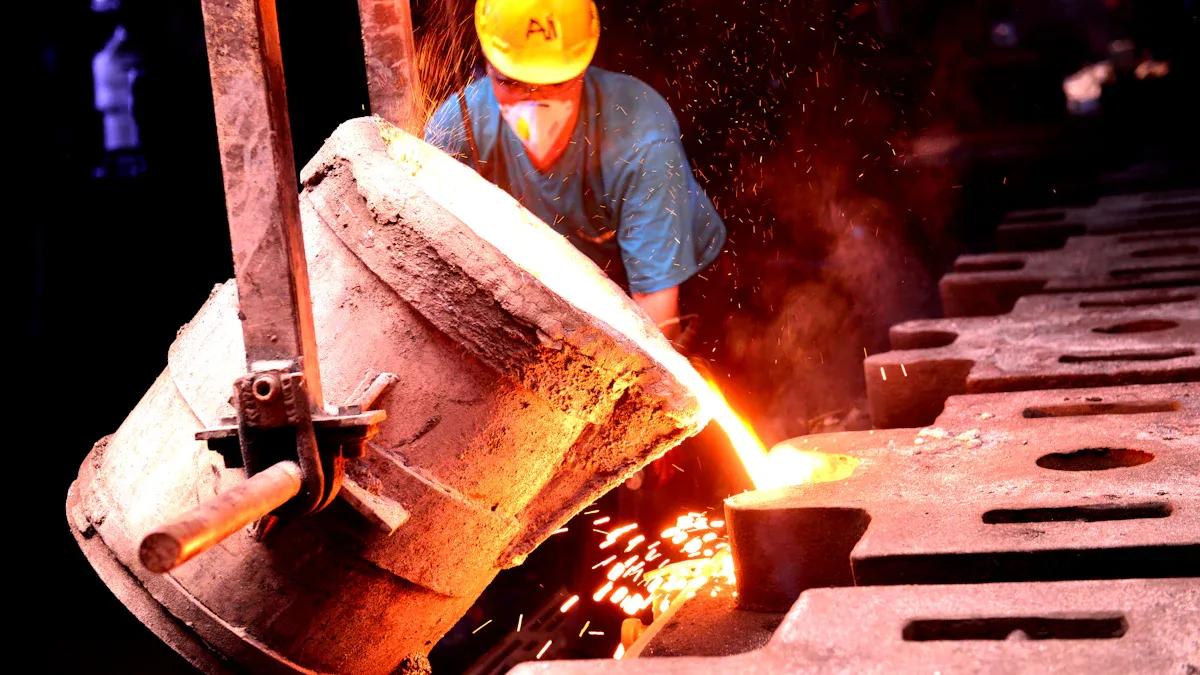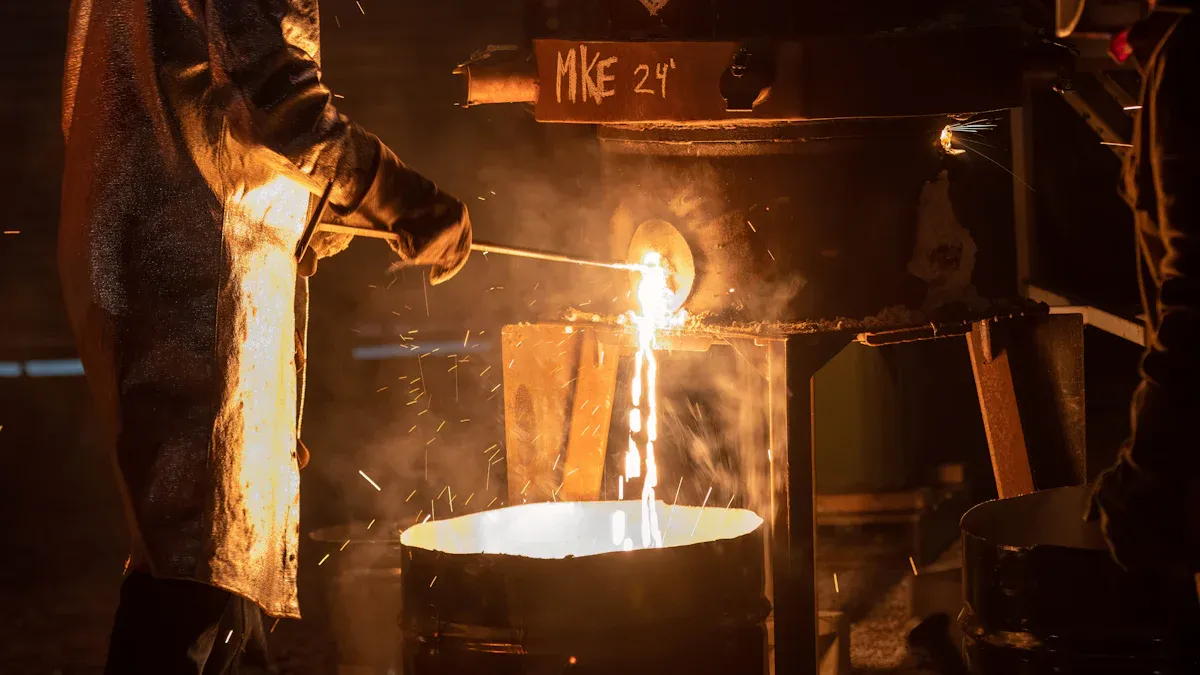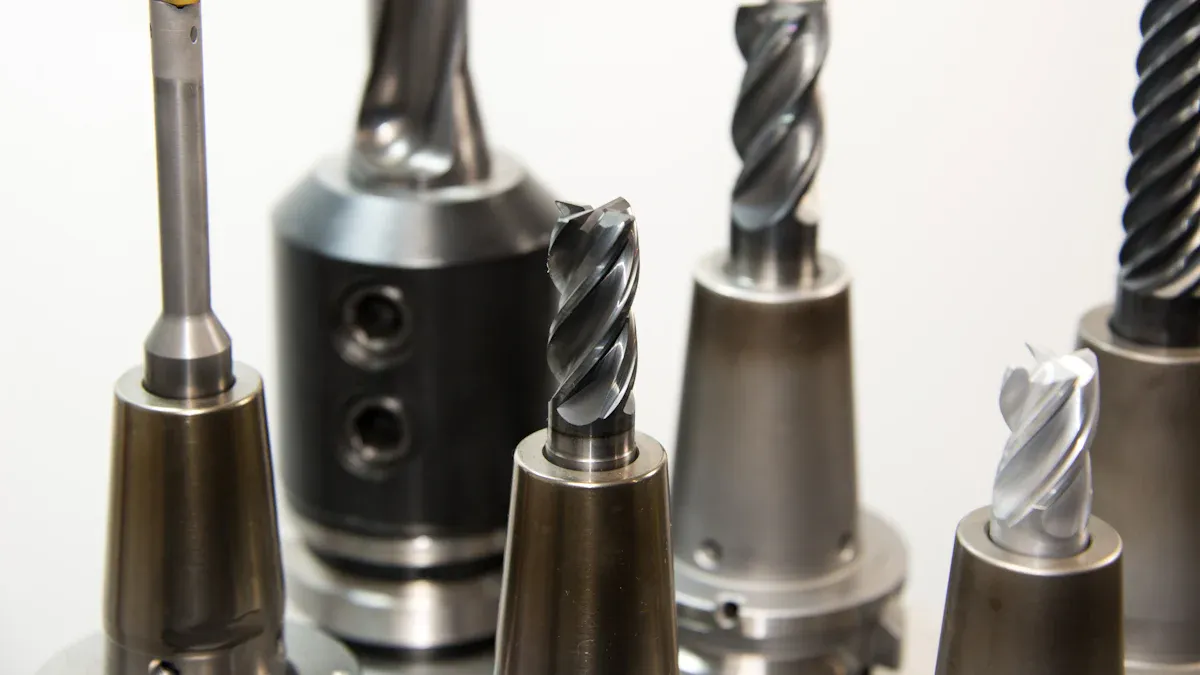
Precision casting processes have become a game-changer in modern manufacturing. Its ability to produce lightweight, high-performance components makes it indispensable for industries like aerospace, automotive, and energy. The global market for precision casting is expected to grow at a steady 4.5% CAGR from 2024 to 2030, driven by the demand for fuel-efficient designs. Manufacturers also benefit from its versatility, as it supports various materials, including investment casting metal and investment metal alloy casting, to meet diverse industrial needs. Without precision casting processes, industries would face challenges like higher costs, material waste, and limited design flexibility.
Understanding Precision Casting Processes

Definition and Key Features
Precision casting processes, also called investment casting, are known for their ability to create highly accurate and intricate metal components. This method involves pouring molten metal into a ceramic mold that perfectly matches the desired shape. Industries like aerospace, automotive, and medical rely on this process to produce high-performance parts with tight tolerances.
What sets precision casting apart from other methods?
- It achieves exceptional dimensional accuracy, often with tolerances as tight as ±0.5%.
- The process supports complex geometries that traditional methods struggle to replicate.
- It minimizes material waste, making it both cost-effective and environmentally friendly.
- Parts produced have uniform density and minimal defects, ensuring consistent quality.
- It accommodates a wide range of metals and alloys, including exotic materials.
Precision casting also reduces the need for additional machining, saving time and energy. This makes it an ideal choice for creating intricate parts with smooth surface finishes.
Steps in the Precision Casting Workflow
The precision casting workflow involves several carefully executed steps to ensure accuracy:
- A wax model of the component is created.
- The wax model is coated with ceramic material to form a mold.
- The wax is melted out, leaving a cavity in the shape of the desired part.
- Molten metal is poured into the cavity.
- Once the metal cools, the ceramic mold is broken away, revealing the final component.
Each step contributes to the process’s precision. For example, the wax model ensures the mold captures every detail, while the ceramic coating provides a smooth and accurate surface. This workflow allows manufacturers to produce parts with exceptional detail and consistency.
Benefits of Precision Casting in Manufacturing
Superior Accuracy and Tight Tolerances
Precision casting delivers unmatched accuracy, making it ideal for industries that demand perfection. It achieves tolerances as tight as ±0.5% of overall dimensions, ensuring components fit seamlessly. This level of precision is critical in aerospace, where turbine blades must perform flawlessly under extreme conditions.
- Precision casting creates highly detailed parts with intricate shapes.
- It ensures components meet exact specifications, reducing the risk of failure.
- Industries like medical and automotive rely on this accuracy for safety and performance.
By producing parts with such tight tolerances, precision casting processes eliminate the need for extensive adjustments, saving time and resources.
Capability to Create Complex Geometries
One of the standout features of precision casting is its ability to produce complex shapes. Traditional methods often struggle with intricate designs, but precision casting excels.
- It allows for the creation of components with internal channels, thin walls, and detailed surface features.
- Designs that include undercuts or internal cavities become achievable.
This capability makes it indispensable for high-performance applications in aerospace and automotive industries. For example, jet engine components with intricate internal structures benefit from this process.
Material Versatility and Application Diversity
Precision casting supports a wide range of materials, each suited for specific applications. Here’s a quick look at some commonly used materials and their uses:
| Material | Properties | Applications |
|---|---|---|
| L605 | High strength, oxidation resistance up to 1800°F | Gas turbine parts, medical devices |
| Nickel Alloys | Resistance to extreme temperatures and corrosion | Aerospace, power generation |
| Stainless Steel | Durability and corrosion resistance | General casting applications |
This versatility allows manufacturers to tailor components for industries like energy, automotive, and medical, ensuring optimal performance.
Weight Reduction and Material Efficiency
Precision casting minimizes material waste by producing parts closer to their final shape. This efficiency leads to lighter components, which is especially beneficial in aerospace.
- Thin-walled designs reduce weight without compromising strength.
- Lightweight components improve fuel efficiency and lower emissions.
By eliminating unnecessary material, precision casting supports sustainable manufacturing practices while enhancing product performance.
Consistency and Repeatability in Production
Precision casting ensures every component meets the same high standards. Molds can be reused, guaranteeing identical parts across production cycles.
- This consistency is vital for industries requiring standardized components.
- Large-scale production benefits from the repeatability of precision casting processes.
Manufacturers can rely on this method to deliver uniform quality, even for thousands of parts.
Minimal Post-Processing and Assembly Requirements
Precision casting produces near-net-shape components, reducing the need for additional machining.
- Parts often require minimal finishing, saving time and costs.
- The smooth surface finish achieved during casting further reduces post-processing efforts.
This efficiency makes precision casting a cost-effective choice for manufacturers aiming to streamline production.
Durability and Performance Under Stress
Components made through precision casting excel in durability. They withstand extreme conditions, making them ideal for demanding applications.
| Material | Key Properties | Applications |
|---|---|---|
| MM247 | High-temperature strength, creep resistance | Turbine blades, aerospace components |
| HastX | Superior oxidation resistance, strength | Gas turbine engines, chemical equipment |
From power generation to aerospace, precision-cast parts ensure reliability under stress, maintaining performance in critical environments.
Precision Casting’s Role in Sustainability and Cost-Effectiveness

Reduced Material Waste and Environmental Impact
Precision casting processes stand out for their ability to minimize material waste, making them an eco-friendly choice for manufacturers. By producing near-net shapes, this method significantly reduces scrap material. Unlike traditional methods, it requires less energy input, which lowers the overall carbon footprint. Additionally, many manufacturers now use recycled and eco-friendly materials in precision casting, further reducing environmental impact and conserving resources.
Did you know? Reducing waste in foundries not only decreases landfill contributions but also cuts down carbon emissions. Recycling initiatives in precision casting enhance resource recovery, promoting sustainability while conserving finite resources.
Effective waste management practices in precision casting also lead to cost savings and improved operational efficiency. This makes it a win-win for both the environment and manufacturers aiming to adopt greener practices.
Long-Term Cost Savings for Manufacturers
Precision casting offers substantial long-term cost benefits, especially for large-scale operations. Its ability to produce consistent, high-quality components ensures fewer defects and less rework. Manufacturers save time and money by reducing the need for extensive post-processing and assembly since components are near-net-shape.
Although the initial investment in precision casting might seem higher, the savings from reduced waste and fewer processing steps quickly outweigh the costs. For industries requiring identical parts, such as aerospace or automotive, the repeatability of precision casting processes ensures reliable production at scale. This consistency not only improves efficiency but also enhances profitability over time.
Precision casting stands as a cornerstone of modern manufacturing. Its ability to deliver:
- Exceptional accuracy with tolerances as tight as ±0.5%.
- Complex geometries and innovative designs.
- Sustainable, cost-efficient production.
As industries evolve, precision casting will continue driving innovation, ensuring manufacturers meet future challenges with precision and efficiency.
FAQ
What industries benefit the most from precision casting?
Precision casting serves industries like aerospace, automotive, power generation, and marine. It produces high-quality, durable components that meet strict performance and safety standards.
Can precision casting handle custom designs?
Yes! Precision casting excels at creating custom, intricate designs. Manufacturers can produce parts with unique geometries, internal cavities, and thin walls tailored to specific applications.
Why is precision casting considered eco-friendly?
Precision casting minimizes waste by producing near-net-shape parts. It uses less material and energy, reducing environmental impact while promoting sustainable manufacturing practices. ♻️
